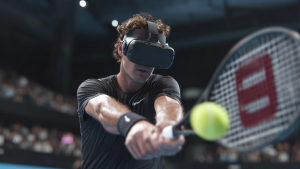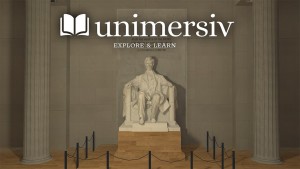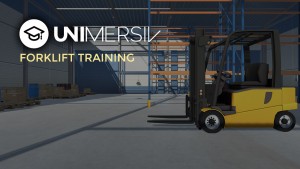VR Education: Why should we employ virtual reality in education?
Education | April 11, 2016
VR at the forefront of our recent technological advancements
Virtual Reality has been at the forefront of our recent technological advancements. It is currently seeing widespread research in its use among various facets of our lives. Despite currently not being commercially available (apart from the gaming set, Oculus Rift), virtual reality is getting a lot of attention from the general public. Its possible ramifications in the educational sector are one of the reasons for that.
Since the start of formal teaching, we have been more inclined to teach through pen and paper. Teaching by experiments came later and now we are looking at a new level of immersive learning in the form of virtual reality. In it, students will be transported to another programmed world through the use of feedback headsets, tactile gloves and motion sensors. While there, they can interact with all the objects present in the 3D landscape. These objects will be programmable to give them as real a look and feel as possible.
Virtual reality has considerable advantages over the conventional way of learning
William Winn was one of the leading proponents of the usage of virtual reality in education. He believed that it has considerable advantages over the conventional way of learning. The primary reason for these advantages is the reification of abstract ideas into a model that can be interacted with in multiple ways. Thus allowing for sources of information that wouldn’t have been possible by learning off of a two dimensional source. Additionally, he held that virtual reality would promote creativity among students as they are exposed to learning through constructionism. In his acclaimed 1993 paper A Conceptual Basis for Educational Applications of Virtual Reality he gives a stellar conclusion in support of using virtual reality as a preferred teaching medium: “VR promotes the best and probably only strategy that allows students to learn from non-symbolic first-person experience. Since a great many students fail in school because they do not master the symbol systems of the disciplines they study, although they are perfectly capable of mastering the concepts that lie at the heart of the disciplines, it can be concluded that VR provides a route to success for children who might otherwise fail in our education system as it is currently construed”
Similarly a 1995 paper by the distinguished computer applications professor, Dr. Veronica Pantelidis, also finds virtual reality as the way to go in the education arena. It puts forward several ideas in favor of the concept of using virtual reality in our educational system. According to Dr. Pantelidis, virtual reality allows student to progress at their own pace without being held back at a class schedule while also motivating them to learn. The motivation stems from the fact that they become participants in their own learning by deep interactivity that would ensure that they are much more interested in grasping the concepts than in an otherwise banal classroom session.
Virtual reality is bound to hold the attention of a student
Apart from dissertations of key figures in the computer science arena, the advantages of virtual reality in education can be gauged from simple logic. Virtual reality is bound to hold the attention of a student as he/she travels through a three-dimensional landscape on an exploratory route. It would be like a movie in which the student is playing the protagonist. Compare it to sitting idly at the back of a classroom and you know how much of an edge does virtual reality have in student participation and information retention.
Furthermore, virtual reality allows for the usage of vivid three-dimensional models in the class to enhance a student’s learning experience. For example, anyone who has studied Organic Chemistry in college would know how tedious and boring it can be to remember the various functional groups, types of bonding and the interaction between different molecules. Virtual reality promises to make all these difficult concepts a breeze as students could explore various molecules from the inside out and see complex reactions unfolding before their very eyes on a macroscopic scale. Similarly, virtual reality can be employed to give comparable immersive experiences to oceanographers, medicine students, cosmologists etc. This will result in much better professionals who are well-versed in their respective fields meanwhile opening for them new venues for research on certain subjects.
Promoting learning through a constructionist approach
As previously mentioned, virtual reality promotes learning through a constructionist approach. This would allow the students to interact with the subject matter in vivid detail. As a result a student is more likely to follow the chain of his/her actions and end up learning much more than is possible in a single lecture. In addition, such an approach would be especially beneficial for students who are physically disabled and thus cannot fit in the conventional experiment-based learning setup for the sciences.
In conclusion, the possibilities of employing virtual reality in the education sector are endless. What remains to be seen is when these applications would be realized for the betterment of student learning.
Subscribe to our newsletter
We write about the use of Virtual Reality for non-gaming applications.











